Celebrating the Vibrant Spirit of Bhutan’s Festivals
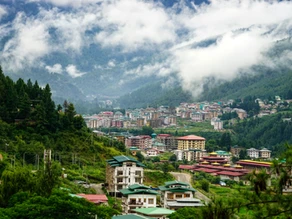
Where Tradition and Color Collide in a Mesmerising Spectacle Photo by Pema Gyamtsho on Unsplash Bhutan – The Land of the Thunder Dragon Bhutan is a small country located in the eastern Himalayas with Tibet towards its northernborder and India at its south, east, and west. Bhutan is well-known for its natural beauty, snow-sprinkled peaks, lush valleys, and mystical rainforests. The country is also famous for its unique and carefully preserved cultural heritage as a Buddhist kingdom. But, one of the most captivating aspects of Bhutanese culture, without fail, is its festivals, which serve as a sneak peek into the country’s rich history and old traditions. Bhutanese festivals are known as “tshechus,” and are celebrated in various religious buildings like temples and monasteries across the country, that leave spectators wonderstruck. Significance of Bhutan’s festivals Festivals act as a way to pay homage to the people’s deities. They are a medium through which Bhutanese seek blessings, and express gratitude for their bountiful harvest. It is believed that these traditions are a means of strengthening community bonds, as people from all walks of life come together to celebrate every year. Traditional elements Festivals in Bhutan are a feast for the senses and are soaked in culture, much like other countries such as India. Every part of these celebrations, from detailed patterned clothing to the thoughtfully crafted masks, has deep symbolic meaning. The dances, which tell stories from Bhutanese mythology and history, convey significant moral and spiritual values. The rituals and ceremonies are supposed to bring prosperity, luck, and knowledge in the spiritual plane. Bhutan’s determination to upholding its distinctive culture is symbolised through the traditional elements of its festivals. Popular festivals Bhutan is home to a multitude of festivals, each with its own significance. Keep reading to find out about some of the most popular ones. The Thimphu Tsechu Festival Photo by Pema Gyamtsho on Unsplash Every year, on the tenth day of the eighth lunar month, one of Bhutan’s most important religious ceremonies takes place in Thimphu, which is the capital of the country. It is a celebration of Guru Rinpoche, also referred to as Padmasambhava, who brought Buddhism to Bhutan in the 9th century. The three-day celebration begins with a number of religious ceremonies and rituals. The event’s major draw is a series of masked dances that the monks perform on the second day. Bhutan was the location for the 2003 film “Little Buddha,” which includes scenes from the Thimphu Tsechu Festival. The narrative of a young American boy who travels to discover his Buddhist origins serves as a reminder of the country’s rich and dynamic culture. Be sure to attend if you ever find yourself in Bhutan during the festival. You won’t be let down! “The masked dances are a way of telling stories about the Buddha’s life and teachings. They are also a way of invoking the power of the Buddha to protect us and guide us on our journey.” – Lama Norbu, “Little Buddha” The Annual Black-Necked Crane Festival Photo by Pema Gyamtsho on Unsplash The Annual Black-Necked Crane Festival in Bhutan is a captivating celebration of the surrounding environment and local culture. Taking place in the valleys where endangered black-necked cranes travel during the winter, the event respects these beautiful birds, which are seen as divine messengers. Locals do masked dances while dressed traditionally to honour legends and blessings from the past. Everyone expresses a desire to safeguard these adorable animals and their vulnerable habitat, and there are many heartfelt prayers and traditional music. In addition to its artistic significance, the event highlights environmental awareness and sustainable lifestyles. Accountability and environmental responsibility are encouraged. As happy occasions are held against the backdrop of stunning valleys and towering mountains, a deep connection to nature is created that leaves a lasting impression on the emotions of the visitors. The Annual Black-Necked Crane Festival serves as a reminder of Bhutan’s commitment to preserving its natural heritage and fostering harmony between humans and nature. It leaves a lasting impression and motivates people to want to protect Bhutan’s wonders for future generations. The Ura Yakchoe Festival Photo by Pema Gyamtsho on Unsplash An annual event called the Ura Yakchoe event takes place in Bumthang, Bhutan’s Ura Valley. It is a commemoration of Guru Rinpoche, the “Lotus-Born Guru” who, as was previously said, introduced Buddhism to Bhutan. The festival is a significant cultural occasion for the people of Ura and lasts for five days, from the 12th to the 16th of the third lunar month of Bhutan. The Ura Yakchoe dance, a religious performance presented by masked dancers, serves as the festival’s focal point. The dance narrates the tale of Guru Rinpoche’s triumph over a demon that was terrorising the valley. The dance is a powerful and humbling event, and music and chanting are used to accompany it. The celebration includes religious ceremonies and rituals in addition to various traditional Bhutanese dances, such as the Ura Yakchoe dance. Additionally, there are kiosks selling food, trinkets, and local crafts. The Paro Tshechu Festival Photo by Pema Gyamtsho on Unsplash Bhutan hosts the Paro Tshechu Festival every year in its lovely courtyard, the Paro Rinpung Dzong. The festival, which has deep spiritual roots, incorporates hypnotic mask dances (Cham) performed by monks and laypeople as well as stories of historical events and moral lessons. The significance of the festival’s religious significance dates back to when Guru Rinpoche first came in Bhutan. People dress in their finest traditional attire to witness the unfolding of priceless Thongdrels (religious scrolls) and to soak in the happy and reverent atmosphere. The Paro Tshechu is not just a cultural show but also a memorial to Bhutan’s unwavering spiritual commitment. It provides a breathtaking glimpse into the country’s valued legacy and identity and makes a lasting impression on all visitors. The Sakteng Festival Photo by Pema Gyamtsho on Unsplash The Sakteng Festival is an annual festival held in the Sakteng Valley of eastern Bhutan. It is a celebration of
From North to South: Best Travel Destinations to Explore in India
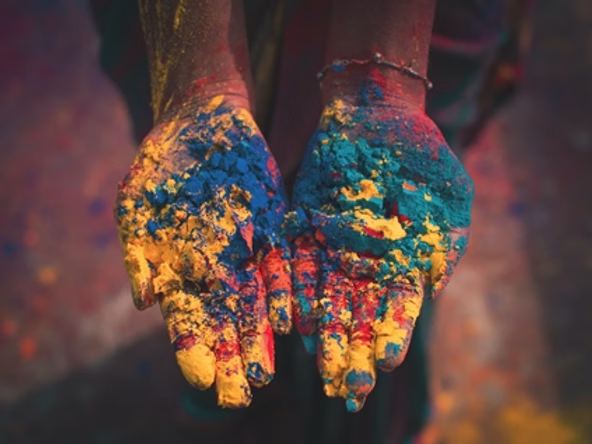
India, a mosaic of peoples, places, and customs, entices visitors from all over the world with its alluring variety and breathtaking beauty. This enchanted country offers a wealth of travel experiences that are as different as they are breathtaking, spanning from the majestic Himalayan peaks to the peaceful Indian Ocean coasts. Join us as we travel virtually the whole length and breadth of this magnificent nation, exploring its rich tapestry of sights, sounds, and tastes. India promises an extraordinary trip that will leave an indelible impact on your soul, from the mysterious realms of the north to the tropical delights of the south. India’s unmatched diversity and spectacular beauty are what make it so appealing as a tourism destination. Every region of this country has something special to offer, from the historical sites in the north to the spiritual havens in the east and the tropical splendour in the south. Embrace India’s colourful tapestry, where age-old customs and cutting-edge technology coexist, and set out on a tour that will stimulate your senses and leave you with lifelong memories. We would love to provide you with a curated list of of the best travel destinations spanning from North to South India. Credit: Unsplash Delhi: Exploring the Capital’s Rich Heritage Delhi, the vivacious capital of India, is a city that skillfully combines its significant historical past with a contemporary global vibe. Delhi provides a thorough travel experience that captures the spirit of the nation with its stunning monuments, vibrant markets, delectable street food, and engaging museums. Delhi has an impressive historical past, which is reflected in its magnificent monuments. The Red Fort, a UNESCO World Heritage Site that housed Mughal rulers for almost 200 years, is one of the city’s most recognisable features. Wander around the expansive gardens, explore the towering red sandstone walls, and take in the complex design of the Diwan-i-Aam (Hall of Public Audience) and Diwan-i-Khas (Hall of Private Audience). In the evening, take in the captivating sound and light show that brings the fort’s history to life. Credit: Unsplash The imposing Qutub Minar, a UNESCO World Heritage Site and the tallest brick minaret in the world, is another must-see landmark. Explore the exquisite carvings and stunning architecture of this historic Islamic building, which serves as a reminder of Delhi’s illustrious history. Visit the nearby Qutub Complex to see the Iron Pillar and other historical buildings like the Alai Darwaza. Credit: Unsplash The lively markets in Delhi are well known for providing a sensory experience. Visit Chandni Chowk, one of Old Delhi’s largest and oldest markets, where quaint pathways are lined with stores offering everything from gadgets and spices to clothing and jewellery. Get lost in the colourful pandemonium, bargain with store owners, and take in the upbeat mood. Don’t forget to try some of Delhi’s world-famous street cuisine, including its tantalising chaat (savoury appetisers), fiery kebabs, and tempting sweets like jalebi and rabri. Delhi provides a variety of lodging choices to fit every need and preference. There are many options for travellers, from opulent five-star hotels to affordable guesthouses and hostels. Connaught Place, Karol Bagh, and South Delhi are popular lodging choices since they provide easy access to the city’s top sights and transportation hubs. Delhi provides a thorough travel experience that truly captures the spirit of India with its historical significance, cultural attractions, busy markets, mouthwatering street food, and interesting museums. Experience the architectural magnificence of buildings like the Red Fort and Qutub Minar, stroll through the vibrant markets of Chandni Chowk, savour the savoury street food, and explore the museums to learn more about the city’s extensive cultural history. With a variety of lodging options and accessible transportation, seeing Delhi is a memorable trip that leaves visitors with enduring memories of this alluring city. Jaipur: The Pink City’s Royalty and Charm The colourful city of Jaipur, also known as the Pink City of India, captivates tourists with its extensive history, magnificent architecture, and extravagant culture. Jaipur offers a mesmerising fusion of traditional enchantment and contemporary energy. It is known for its majestic palaces, intricate handicrafts, and delectable cuisine. Without visiting the magnificent Amer Fort, which is situated just outside of the city of Jaipur, a trip there is not complete. This UNESCO World Heritage Site, which is surrounded by the Aravalli hills, is impressive due to its detailed carvings, gorgeous mirror work, and large courtyards. Take a jeep or elephant ride up to the fort to experience the splendour of the Rajput style of construction. Credit: Unsplash Other prominent forts in Jaipur are Nahargarh Fort and Jaigarh Fort, each of which has a distinctive beauty and historical significance. These forts transport you back in time to the era of Rajput bravery and splendour while providing sweeping vistas of the city. Shopping in Jaipur is a delight, especially for those seeking out authentic Rajasthani crafts. Visit the crowded markets of Bapu Bazaar and Johari Bazaar to find a wide selection of pottery, handicrafts, jewellery, and textiles. Don’t pass up the chance to buy the renowned Jaipur blue pottery, block-printed clothing, and fine silver jewellery. Consume the regional food of Jaipur to experience the true flavours of Rajasthan. Try the well-known Dal Bati Churma, which combines baked wheat dumplings, lentils, and sweet bread crumbs. Laal Maas, a fiery red beef curry, and delectable desserts like Ghewar and Ghevar are other local specialties. For a complete gastronomic experience, try these exquisite dishes at reputable diners and nearby restaurants. Jaipur provides a selection of lodging choices to meet the requirements of every traveller. There are options to suit every preference, from opulent heritage hotels housed in old palaces to affordable guesthouses and boutique hotels. The locations of Johari Bazaar, Bani Park, and Civil Lines are well-liked for being close to important attractions and offering a variety of lodging options. With its gorgeous palaces, impressive
5 Festivals like Halloween in India that You Should Know About
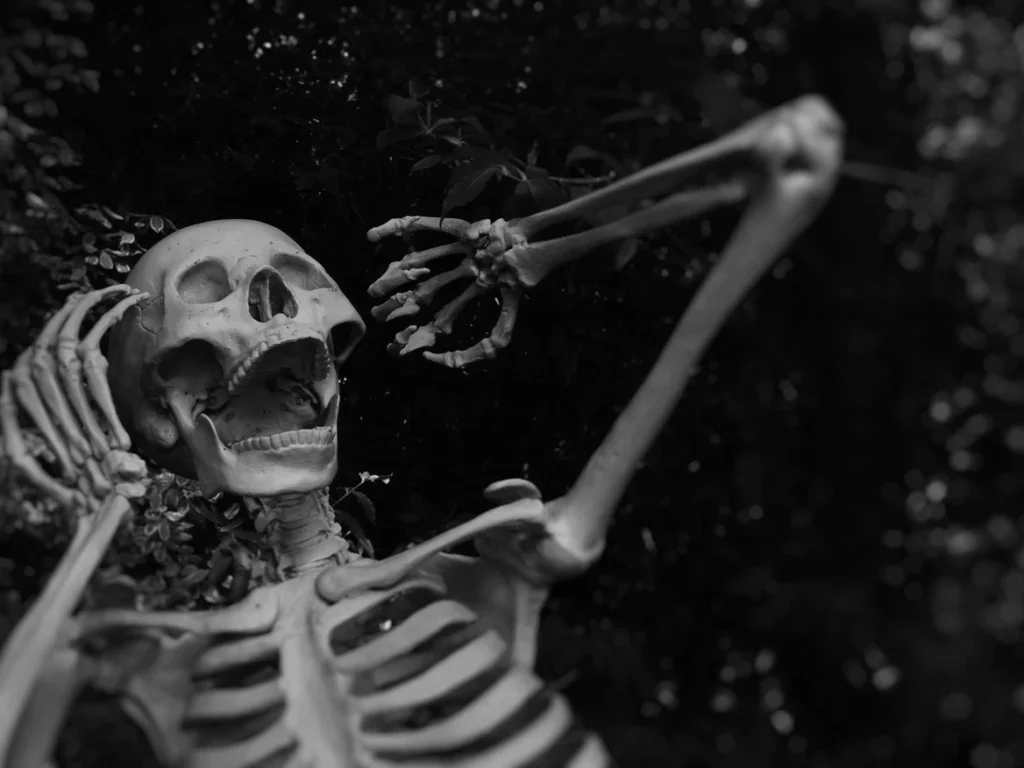
Halloween is a festival that is celebrated all around the world on October 31st, the eve before the Western Christian celebration of All Hallows Day. It signifies the beginning of Allhallowtide, the season of the liturgical year in which saints, martyrs, and all the deceased are remembered. Trick-or-treating, dressing up in Halloween costumes, making jack-o’-lanterns out of pumpkins, lighting bonfires, bobbing for apples, playing divination games, pulling pranks, and going to haunted places are just some of the things done on Halloween. Image by Sabina Music Rich Immigrants from Europe who were acquainted with the custom’s origins took Halloween to the United States. It was economically brought to the country as a mass-cultural souvenir and then to India after liberalization. This exciting holiday is now observed in places all over the world. Indians are slowly beginning to make Halloween an annual celebration. Despite how unnatural this pairing may seem in the traditional sense of things; it is normal culturally. In fact, it is actually better embraced in India than it is in the US. These are 5 festivals that have been celebrated in India for centuries that are very similar to Halloween! Bhoot Chaturdashi Gai Jatra Pitru Paksha Shab-e-Barat Bada Badua Daka 5 Festivals like Halloween in India Although it may not have caught everyone’s attention in India, the holiday has definitely started becoming popular among young people living in different parts of it. There are also a number of festivals in India that are incredibly similar to Halloween and have been around for centuries! Here are 5 Indian holidays that have their own customs for honoring the dead: 1. Bhoot Chaturdashi The West Bengali holiday of Bhoot Chaturdashi or Narak Chaturdashi, which falls on November 14, is the equivalent of Halloween. The occasion is celebrated on the 14th day of Krishna Paksha in the Hindu month of Kartik, according to the Saka period calendar. In the far east of the country, it is a day for warding off evil spirits or ghosts, whilst in the north, it is celebrated as Chhoti Diwali. The 14 ancestors are summoned on Bhoot Chaturdashi, who both welcomes and wards them off simultaneously. Image by Sreejith S Nair 14 ancestors are summoned on this day by ceremonies and prayers, and they are then banished. It is observed prior to Kali Puja (Diwali in north India). Kali Puja and Bhoot Chaturdashi are days when people honor the Devi to protect their family and children from “tantriks” because Bengal has a legacy of dark magic. Bhoot Chaturdashi honors deceased ancestors, much like Halloween serves as a passageway for the undead to creep through your neighborhoods. Ancestors are said to still visit families today because it is still thought that there is a thin veil separating this world from the underworld. In order to symbolize the same, 14 diyas are distributed throughout the home to direct the 14 ancestors. It is believed that these prevent them from losing their way. 2. Gai Jatra Image by Hanub Krishna This holiday honors deceased loved ones. It is observed in Nepal. On this day, family members dress up as cows and participate in marches to honor their family and friends who are no longer with them. They do this to guarantee that they will have a place in heaven. Gai Jatra takes place in the lunar month of Bhadra, which often falls between the months of August and September. The festivities take place on Pratipada, the initial day of the dark fortnight, in accordance with the Nepalese lunar calendar. The festival of the dead is observed in different ways, such as the Nepali folk arts in Kathmandu, and in various Nepali cities like Patan, Kirtipur, and Bhaktapur. The Taha Macha chariot of Bhaktapur, which is decked with images of the dead signifying departed spirits, is one of the key elements of the Gai Jatra celebration. In Kirtipur, the Gai Jatra has a different meaning. Kirtipur’s followers parade around the city wearing costumes modeled after different Gods and Goddesses. In addition, Ghinta Ghisi presents a variety of cultural shows. The folk dance is done locally and includes devotees, kids wearing colorful masks, and people who have painted their bodies just like Halloween! Gai Jatra is a vital Nepalese celebration that is very difficult for mourning families. During this period, families participate in rituals that are thought to bring comfort and safety to the souls of the deceased. 3. Pitru Paksha Forefathers are also remembered for Pitru Paksha. It lasts for a period of 16 days. Hindus partake in rituals during this time to satisfy the appetites of their deceased ancestors by providing food and drink. Three generations of a person’s ancestors are revered during Pitru Paksha for a reason. Image by Akshaya Patra The souls of the three previous generations are said to be housed in Pitriloka, the place between earth and heaven ruled by Yama, the deity of death. The generations prior to these three generations live in heaven and are not given tarpan because of this. With the help of this celebration, families may make sure that their ancestors are cared for long after their souls have gone to heaven. Offering prayer services, meals, and daan to the less fortunate as well as the temple priests serves as a way to commemorate the occasion. According to ancient writings, the soul begins its journey to Yamapuri on the fourteenth day following death and arrives there in seventeen days. To get to Yamaraj’s court, they must journey for an additional 11 months. It is believed that the spirit is deprived of food, water, and clothing until it enters the court. These souls receive the daan, tarpan, and offerings made during Pitru paksha, which quench their hunger and thirst. 4. Shab-e-Barat On the eve of the 14th and 15th of Sha’aban, the eighth
10 Best Places to Celebrate Navratri in India
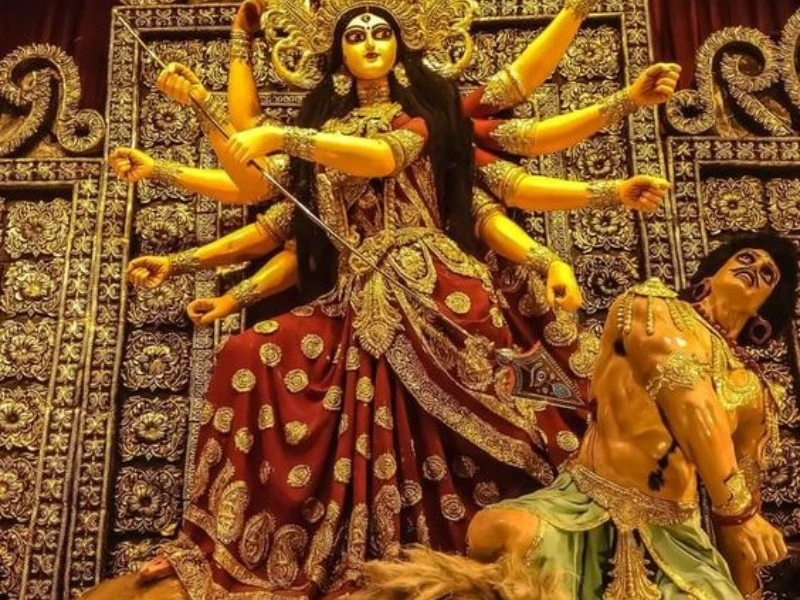
India is known for its unique blend of culture and ethnicity that spreads great energy, vibe, and power. Festivals in India are the best time to witness the alliance of vibrant and colorful confluence of different communities at one point. The carnival of Navratri is celebrated with great zeal across the country in different forms and methods marking the victory. Navratri is the significance of the victory prevailing over evil, some celebrate the Maa Durga’s victory over Mahishasura and a few memorialize Sri Ram’s comeback after defeating Ravana. Experience the diverse traditions of these places by checking out the different effigies that symbolize happiness, positivity, and hope. Best places to spend Navratri Holidays: 1. West Bengal 2. Gujarat: 3. Varanasi: 4. Chattisgarh: 5. Maharashtra: 6. Jammu: 7. Karnataka: 8. Himachal Pradesh: 9. Tamil Nadu 10. Andhra and Telangana: A picture from Pinterest West Bengal: Navratri is the best time to visit West Bengal to go for a pandal hooping and embrace the faith of devotees towards Durga Mata. Married women smear sindoor at each other, marking the return of Khali as Durga to lord Shiva. All the craftsmen and artists flock together to curate meticulous pandals of Khali Mata. Best temples to visit during Navratri Celebrations: · Khalighat Kali Temple, Kolkata. · Sham Ray Temple, Bhishnupur. · Belur Math, Howrah. The young girls worshiped as a form of Durga Mata. A picture from travel site India. Gujarat: The state hosts Garba and nights on a large scale enticing the tourists of different parts to whirl and twirl on the flock beats of Gujarat. Devotees offer prayers to Garbo, an earthenware pot, in which a betel nut, coconut, and silver coin are placed. The motherhood of the Goddess is worshiped by all the women celebrating the harvest and fertility. Maa shakti Garba night in Vadodara is listed in the Lima book of records for hosting more than 40,000 dancers taking part in the event. Best places to celebrate during Navratri Celebrations: · Khodiyar Mandir, Bhavnagar · Chamunda Mata Mandir, Chatila · Ashapura Mata-no-Madh A picture from Pinterest Varanasi: The locals celebrate it as Sharadiya Navratri for nine days lighting the Akhand Jyothi at Maa Durga temple of Varanasi. The lighting lamp signifies the ray of hope to overcome the hardships of life and all the lanes stage up for live plays of Ram Katha. Annapurna temple in Kashi is revered for good health and long life. Best Temples to visit during Navratri Celebrations: · Kanaka Durga Mandir. · Annapurna Devi Mandir. · Sankata Devi Mandir. A picture from Pinterest Chattisgarh: The shrine in Bastar district is one among the 18 shakti peeths with the primary deity as Goddess Danteshwari. Dussehra in Chattisgarh villages is celebrated for 75 days following the ancient kings’ ritual of carrying deities on wooden chariots from neighboring towns with dance, plays, and fares with the processions. Best Temples to visit during Navratri Celebrations: · Maa Bamleshwari Devi, Dongargarh. · Danteshwari Temple, Dantewada · Chandrasini Devi Temple, Janjgir. A picture from the saree.com website. Maharashtra: Few states memorialize Lord Rams Return and other shrines worship the power of Shakti. Mumbai city lights up with traditional and modern setups like pandals resembling Gujarat Khali puja and the dandiya nights replicate the Vadodra Garba festivities. Best Temples to visit during Navratri Celebrations: · Shiridi, Ahmednagar. · Mumba Devi Temple, Mumbai. · Mahalakshmi, Kolhapur. A picture from the Pinterest website. Jammu: Vaishnav Devi temple in Katra, Jammu is the most revered shrine of Hindus. The devotees flock to Katra during this festive season to offer prayers and seek the blessing of Goddess Shakti. Vaishnav Devi is an incarnation of Mahalakshmi, Mahasaraswati, and MahaKhali bestowing good deeds to her Devotees. Apart from Vaishnav Devi, many other local Goddesses are revered during these night nights. Best Temples to visit during Navratri Celebrations: · Bawe-Wali-Mata. · Kol Kandoli Mata. · Maa Vaishno Devi. A picture from the south tourism website Check out the local festivals of Jammu and Kashmir Karnataka: Karnataka celebrates the Nadahabba festival for ten days following the kingly traditions of the 16 century. The name of the city is given by the slaying of Mahisasura and locals believe Chamundi Devi is the guardian deity. One can witness the world-famous procession with elephants, camels, and horses on Vijayadashami, hosted in front of the illuminated Mysore palace. Best Temples to visit during Navratri celebrations: · Mookambika Temple. · Horanadu Annapurna. · Mysoreore Palace. A picture from the Pinterest website. Himachal Pradesh: In Himachal, the locals celebrate the triumph of Lord Sri Ram and his return to Ayodhya hence starting the carnival on the 10h day. The Goddess Hadimba is worshipped by the locals and depicts short stories of Mahabharat and Ramayan through dance and play. The Kullu Dasara organizes jagratas, festive fares, and workshops attracting tourists from all corners. Best Temples to visit during Navratri celebrations: · Sri Naina Devi Temple · Chaiti Navratri Devi Temple · Bajreshwari, Kangra Fort. A picture from the southtourism website. Tamil Nadu: In Tamil Nadu, the deities of Durga, Laxmi, and Saraswathi are worshipped. The devotees paint their bodies in various avatars as an offering to the deity on Vijayadashami and throng the procession of the Goddess. All these nine days they set up a doll exhibition promoting the great works of deities, and gurus. Best Temples to visit during Navratri celebrations: · Meenakshi Temple, Madhurai. · Sri Mutharamman Temple, Thoothukudi district. · Vellore Gloden Temple, Siripuram. A picture from the Travel site India Andhra and Telangana: During the nine days of Navratri, Maa Durga is adorned in nine forms are worshipped with special rituals by the pilgrims. Every form of Goddess Parvati graces us in life with all pleasures and drives away the pain. In Telangana, the festival is known as “Batukama” – the colorful floral festival, a pot filled
10 Most Exciting Music Festivals in India
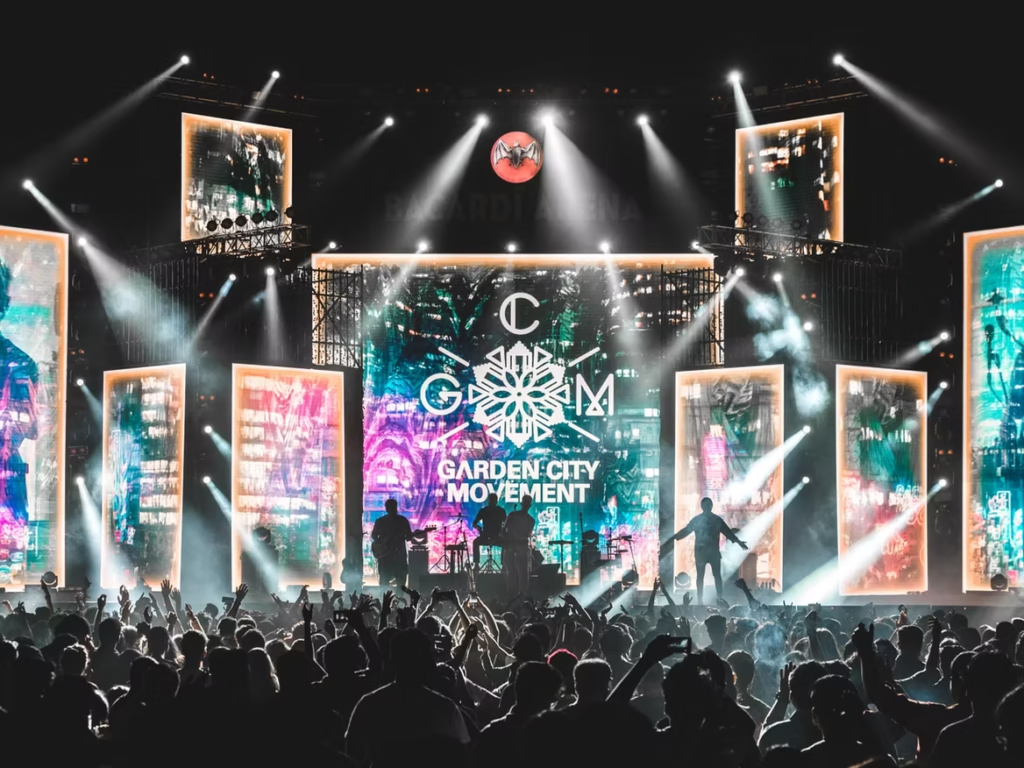
Festivals are always synonymous with fun and entertainment. Likewise, music festivals are a great way to have a fun time with friends or family members through some shared love of music and musicians. There is no doubt that music festivals in India have firmly established a solid foundation among Indians given the new pop-ups of several kinds of music festivals all over the country. With the well-developed music festival culture, the cities or towns hosting these festivals have also seen a great inflow of tourists. This has in turn been a boost to the travel industry. Thus, in addition to attending the festivals, you get to explore the several cities it hosts. In this blog post, we will have a look at 10 of the most exciting music festivals in India. Exciting Music Festivals in India So, here is a list of the most interesting music festivals in India you must attend: Sunburn Festival, Goa Ziro Festival of Music, Arunachal Pradesh Magnetic Fields Festival, Rajasthan Hornbill Festival, Nagaland NH7 Weekender, Pune & Shillong Mahindra Blues Festival VH1 Supersonic, Pune Sula Fest, Nasik Fireflies, Bangalore Locals District, Jaipur 1. Sunburn Festival Credit: Sunburn Goa via Twitter Undeniably, one of the most exciting music festivals in India is the Sunburn Music festival. It is purely an Electronic Dance Music (EDM) Festival that draws in a huge crowd of this genre lovers. A three days event, it is also considered one of Asia’s largest music festivals with tens of thousands of attendees. From exciting music from renowned international artists to good food and lively entertainment, Sunburn Festival is a great choice for friends to unwind for quality time. Another reason to love the festival is the location where it’s held. Goa, one of the most popular vacation destinations in India hosts this festival and it is a great way to explore the beautiful city as well as enjoy the festival. When: December Ticket Price: Starting at ₹3,000 Offbeat Goa 2. Ziro Festival of Music Credit: GatecrashIndia via Instagram A four-day music festival held in the lap of nature, under open skies, pine trees and rolling green valleys are the Ziro Festival of Music. It is perfect for music lovers who are also nature enthusiasts. It is an annual event that takes place in the mesmerizing Ziro Valley in Arunachal Pradesh. An eco-friendly music festival, it requires no setup as the lawn provides the perfect sitting space for visitors and the indigenous people of the Apatani tribe working to help protect the surroundings. This music festival in India celebrates the rich culture of the East and showcases the talented musicians of this part of India. Another bonus is the camping facilities at the site of the event which will surely make this an experience to remember. When: September Ticket Price: Starting at ₹5,000 3. Magnetic Fields Credit: Munbir Chawla A boutique music festival held on the grounds of the magnificent Alsisar Mahal in Shekhawati, Rajasthan, Magnetic Fields Festival is truly a once-in-a-lifetime experience. The walls of the palace and its surroundings reverberate with the sounds of electronic music. This music festival in India aims at promoting fresh underground musicians alongside renowned music legends as it introduces people to all aspects of music talents. It is a three-day event that graces its visitors with the beautiful culture and traditions of the Rajasthani people. When: December Ticket Price: Starting at ₹ 6,000 4. Hornbill Festival Credit: Abhishek Bhowmik One of the largest cultural festivals celebrated in India is the Hornbill Festival. It is a seven-day event that is held amid the mountainous town of Kohima, Nagaland. This festival is spear-headed by the Nagaland Government. The music festival is a huge part of the event and thus draws in a lot of crowds from all over the world. An all-rock festival that introduces veterans as well as upcoming artists from the Northeast as well as other international bands, this is a great time to enjoy some culture and great music at the same time. When: December Ticket Price: Starting at ₹ 1,000 5. NH7 Weekender Credit: NODWIN Gaming The NH7 Weekender is undoubtedly the most renowned indie music festival in India. Held in several Indian cities, it is a one-day event that takes the crown of being immaculately organized. With a lineup of the most notable artist from India as well as International musicians, this music festival is worthy of gracing anybody’s bucket list. From amazing music to delectable food and drinks, NH7 Weekender has established itself as the most noteworthy event in India. The music festival is held in cities like Pune, Shillong, Delhi, Kolkatta, Bangalore, and several others. When: October to December Ticket price: Starting at ₹ 2,000 6. Mahindra Blues Festival Credit: GQ India The Mahindra Blues Festival which is held every year in Mumbai, Maharashtra is Asia’s biggest Blues Festival. It is a two-day festival that aims to promote the blues genre community. It brings in the well-established artists of the blues from all over the world and also introduces several upcoming artists. It is celebrated with a lot of fanfare and good food. Anyone coming to Mumbai for the festival can also enjoy the vibrant nightlife and other iconic offerings of the city. When: February Ticket Price: Starting at ₹ 2,500 7. VH1 Supersonic Credit: Sherpaland A star-studded music festival held every year in Pune, VH1 Supersonic is one of the most exciting events to be a part of. With the biggest names in the music industry gracing the stage, the VH1 Supersonic covers a range of genres like jazz, rock, electronic, pop, reggae, and indie. The variety of music serves as an excellent way to pull in crowds to enjoy its music. Nothing about this event is sub-standard including the drinks and food made available hence it is a music festival in India that you can add
Be a Part of these Festivals in Kashmir
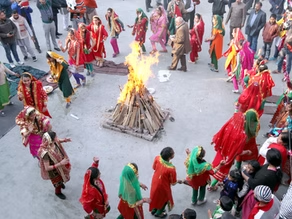
Considered to be one of the most exotic travel destinations in India, Kashmir offers an array of things a visitor can experience. The reasons for visiting Kashmir are far and wide but the right way to experience the true nature of Kashmiris is to be a part of the many festivals that the people celebrate. The cultural and religious diversity of Kashmir is truly unique and intricate to the region. The festivals that are hosted in Kashmir, be it cultural, religious, or celebrating foods or flowers, it is one exceptional way to enjoy the Kashmir experience by being a part of it. Here are a few festivals that you would want to add to your bucket list on your next trip to Kashmir. Tulip Festival Saffron Festival Shikara Festival Gurez Festival Lohri Eid Ul Fitr Baisakhi Tulip Festival Photo by Naphat Photography One of the most renowned flower festivals in India, the Tulip festival is celebrated every year for the first fifteen days of April. It is held at the Indira Gandhi Memorial Tulip Garden in Srinagar which is also the largest tulip garden in Asia. Tulip flowers are in full bloom during the festival and the array of colors and luscious growth of flowers for stretches on end is what makes this festival worth visiting. The sights of the garden are utterly breathtaking. Apart from the flowers, several other showcases of handicrafts, cultural programs and traditional Kashmiri food also make this festival an exciting prospect. When: April Saffron festival Photo by David Thiercelin A fiesta spanning over eight days, the Saffron festival is celebrated with cheer in Pampore, Kashmir. The festival marks the reaping of Saffron where visitors are allowed to directly harvest Saffron from the fields with the farmers. During the festival, tourists and visitors can buy authentic and high-quality Saffron from the farmers. Along with plucking Saffron, various other cultural programmes like traditional Kashmiri folk dances like Kud, Bhand and Dumhal are showcased during the festivities. When: Mid-October to the first week of November Shikara Festival Photo by Adotrip One of the most notable outdoor activities in Kashmir has to be the Shikara ride in Dal Lake, Srinagar. Due to its immense popularity, the government of Kashmir started the festival in 2016. During the festival, the Shikaras are hand-painted in designs and decorated beautifully by the owners. Another spectacle during this festival is the Shikara race which attracts a lot of visitors. You can also enjoy other activities like shopping on the floating markets. When: July or August Gurez Festival Photo by Kashmir Convener A charming and peaceful valley decorated with stunning mountain ranges, a luscious spread of meadows, and the sparkling river of Kishanganga flowing through it, Gurez valley is one of the most beautiful villages. Here, in this small village, the Gurez festival is held. The festival isn’t one with loud fanfare and festivities but rather subdued in its nature. It is celebrated to mainly enjoy the traditional and calm lifestyle of the village. Visitors are introduced to the talented side of the locals as they showcase their cultural aspects like folk songs and dances, intricate handicrafts, local cuisines, and other activities like trekking, river rafting, horse riding, and cycling are all part of the festivities. When: July to August Lohri Photo by Excelsior Rakesh Another festival that is celebrated with anticipation and enthusiasm in Kashmir is Lohri. The festival marks the end of winter and the arrival of longer days. Lohri celebrates the harvest of the sugarcane crop. During this festival, a bonfire is lit and people sing and dances around the fire. Various winter delicacies like corn, jaggery, sesame, and peanuts are eaten during this time. When: 13th January Eid Ul Fitr Photo by Kashmir Monitor Marking the end of the month-long fasting of Ramzan, Eid Ul Fitr is celebrated on the last day of fasting. Muslims celebrate it all over Kashmir with extravaganza and lavish means as part of breaking their fast with magnificent feasting. Since the major religion of Kashmir is Islam, the scale of celebrations is notably luxurious. The festival is also marked by every Muslim wearing new clothes, exchanging sweets and gifts, giving to charity and indulging in delicious food. When: May Baisakhi Photo by Simar Roop A prominent festival of Sikhs, Baisakhi is celebrated in Kashmir with a grand reception. It marks the end of the harvest season and the celebrations are far and wide. This festival is of importance to and great significance to farmers. It is an ancient festival of Hindus as well and the celebrations include sharing festive food, processions are held, and people gather to socialize, dance and sing. When: 13th April The culture and tradition of Kashmir are closely interwoven with the lifestyle of the locals and this makes the experience of festivals even more exciting and special. So, on your next visit to Kashmir, if you happen to be in the valley during the festival make sure you immerse yourself and become one with the people and its vibrant culture.
9 Must-visit Festivals in Ladakh (2022 List)
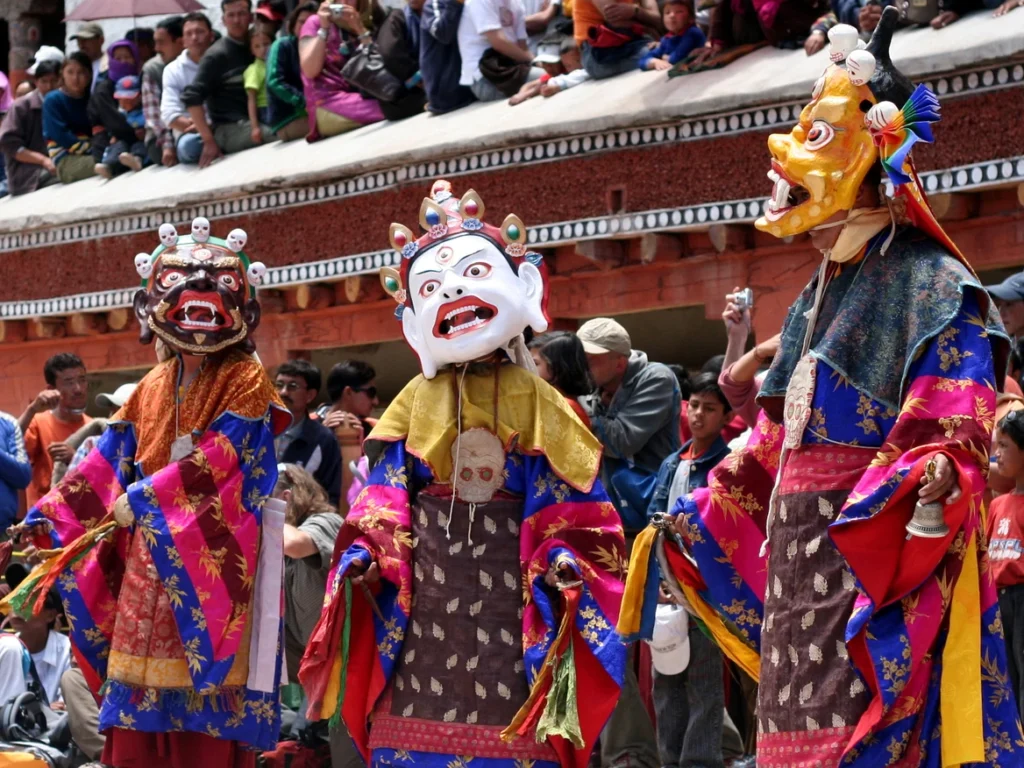
Who doesn’t like a starling and lively experience filled with colors of sacred tradition? The festivals in Ladakh give an insight into ancient Buddhist practices and are known for their traditional dances, ceremonial practices, music, and display of Buddhist art. The festivals of Ladakh are a major tourist attraction and receive a heavy number of visitors from across the world. The festivals celebrated in Ladakh do not fail to mesmerize tourists by showcasing the different cultures that accommodate the region. Here’s a selectively curated list of festivals celebrated in Ladakh that you must attend at least once. Must-visit Festivals in Ladakh Here’s a selectively curated list of festivals celebrated in Ladakh that you must attend at least once: Hemis Festival Yuru Kabgyat Festival Losar Festival Saka Dawa Festival Ladakh Harvest Festival Sindhu Darshan Festival Phyang Tsedup Festival Dosmoche Festival Tak Tok Festival 1. Hemis Festival Tama @ Flickr Hosted in the Hemis gompa, the Hemis festival is celebrated on the 10th day of the Tibetan lunar month. The festival is characterized by the display of a four-story thangka (a Buddhist painting done on cotton) shown once every 12 years. The festival is held to commemorate the founder of tantric Buddhism in Tibet; Guru Padmasambhava. You can find the monks and locals dressed in traditional clothes and beautiful jewelry. The festival is also known for the Cham dance which is an important part of the tantric tradition along with music provided by drums and longhorns giving an ancient aura and attracting tourists from all over the world to this festival. Celebration time: early June for 3 days Location: Hemis monastery, 45 km from Leh city 2. Yuru Kabgyat Festival by travelviewpoint.com The Lamayuru monastery, more commonly known as the moonscape for tourists is the host of this festival. The Yuru Kabgyat festival is celebrated on the 17th and 18th day of the 5th month of the Tibetan calendar. The festival is famous for its Cham dance in which the lamas wear colorful vibrant masks and dance in a circle. The drama dance is the main highlight of this occasion and shows the characters of the god of death, Yama, and Padmasambhava. The festival happens in the presence of Buddhist monks not just from India but also from Bhutan, China, Japan, and Korea. Celebration time: June/July Location: Lamayuru monastery, located about 127 km away from Leh 3. Losar Festival Raju Singh @ Flickr The Losar festival is a celebration of the new year celebrated in its 11th month of the Tibetan calendar. The festival is celebrated all over Ladakh and is characterized by ancient rituals and sacrifices. The people illuminate their houses and decorate them by painting religious symbols and flower arrangements. Delicious food is prepared and fed to the gods, deities, and idols as well as animals. Processions of people chanting slogans to chase away evil are also common during this festival. The people carry out these processions wearing traditional clothes and beautiful vivid masks. The Losar festival is a celebration of tradition. Celebration time: December/January Location: All over Ladakh 4. Saka Dawa Festival by tourmyindia.com The Saka Dawa festival is celebrated on the 4th month of the Tibetan calendar. This month is considered to be the month when buddha gained spiritual awakening. The birth of Buddha is also celebrated in the same month making it one of the holiest Buddhist festivals in Ladakh. This festival is characterized by the changing of the flagpole by the monks. The festival is colorful and vibrant and is celebrated all over Ladakh by doing the cham dance and setting animals free. This spiritual festival will surely give you an insight into the Buddhist culture and its teachings. Celebration time: June Location: All over Ladakh 5. Ladakh Harvest Festival by jetsetquest.com Organized by the Jammu and Kashmir tourism department the Ladakh harvest festival is a mixture of Asian Tibetan and North Indian culture shown beautifully through dances, handicrafts, music, and theatre. The festival consists of a procession through the market of Leh in which troops and villages portray their traditions. The festival celebrates and rejoices in the harvest of crops and promotes as well as maintains Ladakh’s rich heritage. Celebration time: 1-5th September Location: Leh 6. Sindhu Darshan Festival Silver Blu3 @ Flickr The Sindhu darshan festival is celebrated on the full moon of the Guru Poornima and goes on for three days. The festival is celebrated in honor of the river Indus and to promote unity and communal harmony in India. The Sindhu darshan festival is characterized by people bringing pots of water from their states and immersing it in the Sindhu river. A reception ceremony, as well as a series of cultural programs from various parts of India, is arranged by the religious associations of the country. A total of 50 monks recite prayers on the bank of the river Indus to celebrate this festival. The Sindhu darshan festival shows the integrity of the country in the best way possible. Celebration time: 1st – 3rd June Location: Banks of Sindhu river 7. Phyang Tsedup Festival Image Source: Indiaeve The Phyang Tsedup Festival in Ladakh is celebrated to commemorate the teachings of Lord Buddha. This festival is dedicated to Jigten Gombo, founder of the Dringumpa Monastic Dynasty. The festival is celebrated on the 2nd and 3rd day of the 6th month of the Tibetan Calendar which falls in July. During the Phyang Tsedup Festival, rituals of burnt offerings are sacrificed and enthusiastic monks draped in hues of robes and smiling masks dances around the monastery. The locals are clothed in colorful traditional outfits as they worship and make merry on the grounds of the monastery. Celebration time: Mid-July/August Location: Phyang Monastery 8. Domosche Festival Image Source: DDNews The Domosche Festival is one of the most popular festivals celebrated in Ladakh. This festival
Best Places to Celebrate Dussehra in India
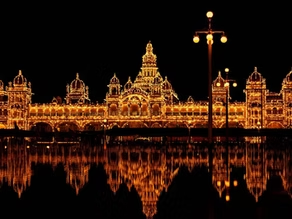
Dussehra or Vijaya Dashami is one of the most important and widely celebrated festivals in India. Mostly celebrated during the month of October or September, it brings with itself an array of joy and an atmosphere of festivity. Dussehra signifies the victory of good over evil as Lord Ram defeated the ten-headed Ravana, who had abducted his wife Sitadevi. Some people also believe that Goddess Durga defeated Mahishasura, a powerful demon under whose leadership the asuras(demons) waged a war against the demigods and defeated them. The demigods sought the help of Goddess Durga to kill Mahishasura. Durga Devi, the divine mother, mounted on a lion, fought the mighty demon for nine days, and killed him on the tenth day. Vijaya Dashami commemorates this victory of Mother Durga over the demon Mahishasura. Effigy of Ravan and his brothers. Many such myths and tales can be heard all over India. Each and every state in India is seen celebrating the festival in a unique and flamboyant way. Let’s have a look at the best places to celebrate Dussehra in India. 1. Kullu Dussehra It is one of the most famous celebrations of the Dussehra festival in the Dhalpur maidan in the Kullu valley of Himachal Pradesh. It is also given the status of an International festival which attracts tourists in large numbers. Dating back to the 17th century, Kullu Dussehra starts on Vijaya Dashmi and lasts for seven days. It is a lovely blend of rich culture, history, and ritual. This festival is only held to celebrate the success of good over evil. While music and color create a peaceful ambiance, thousands of people gather on the first day of celebration to pay respect to Lord Raghunathji. The whole maidan is decorated with colorful flowers, tents, domes, etc. One can also see a variety of dances in Kullu like Ghadai, Panjragi, Pheti, Basahri, Lahuli, Kortha, Charase-Tarase, Bandhu, Rakhs, and Phagli, etc, Lalhri dance is very popular. To know more about this festival, read this amazing blog. Dussehra celebration at Kullu Valley. 2 .Mysore, Karnataka Known as Mysore Dasara, it is a royal celebration that marks the victory of truth over evil. The Mysore Palace is decorated with colorful lights. The Dasara festivities have a rich history of more than 400 years. During this 10 days festival, the normally calm and peaceful city transforms into a hub of celebrations and activities. On the last day of the celebration, an elephant carries a large idol of Goddess Chamundeshwari in a procession that begins from the palace and ends at Bannimantap Ground. The myth goes that Goddess Chamundeshwari killed demons and in her honor people celebrate this festival. Aside from the processions at the end of Mysore Dasara, several other events take place throughout the ten days. These events manage to captivate its visitors with a wide range. The activities vary from sporting events, cycling and heritage tours, wrestling, yoga, film festivals, pet shows treasure hunts to events celebrating the art and culture of Mysore. Food is also a huge aspect of this festival, and you will find a variety of different food stalls showcasing their delicacies to all visitors. While most of the Mysore Dasara remains free for the visitors, the most important events, “The Torchlight Parade” requires a ticket. Mysore Palace decked up for Dussehra. 3. Bastar, Chhattisgarh Bastar Dussehra is one of the most unique festivals in the state. It is a 75 days long Dussehra celebration. The festival is celebrated to honor Devi Danteshwari, the main goddess of Bastar’s tribal community. The origin of Bastar Dussehra dates back to the 15th-century when the Kaktiya ruler King Purushottam Deo went to Jagannath Puri temple for worship and came back as ‘Rath-pati’ with divine permission to mount on a chariot. Since then, Dussehra is being celebrated by the people of Bastar in this unique way. The festival brings a great deal of ardor and enthusiasm among locals, irrespective of their caste. All presiding deities from chota mandirs around Bastar travel to the district headquarters of Jagdalpur. The Khaki tribe worships the rath before it is used. The Parja provide ropes to pull the chariot, while Maria and Dhurwa tribes pull the Dussehra rath made of wood. The festival gives you a peek into the tribal culture and their rituals. You can also witness unusual ceremonies and rituals like worshipping wood, posting pillars, installing urns, setting up a throne for Devi Kanchan, holding a meeting of tribal leaders, and so on. At the end of this festival, tribals bid goodbye to their deities through cultural music and dance performances. Cultural music and dance performance at Bastar Dussehra. 4. Kolkata, West Bengal One place you definitely should be during Dussehra is Kolkata. Dussehra along with Durga Pooja is celebrated with great pomp and show. The city is loaded with decorated pandals representing a unique story. The pandals that are put up during Durga Puja in Kolkata are a visual delight. One can find more than 3000 pandals in Kolkata. The preparations for these pandals begin three to four months prior to the festival. Some of the most famous pandals in Kolkata are in Kumurtuli Park, Suruchi Sangha, Jodhpur Park, College Square, and Bagbazaar. They offer various mouth-watering Bengali sweets. On the last day of celebration, married women participate in a ceremony called ‘sindoor khela’, where they wear traditional sarees and smear each other with sindoor. The celebration is concluded by submerging the deities of Goddess Durga in the river. Durga Puja Pandal. 5. Kota, Rajasthan Dussehra is celebrated with great enthusiasm in Kota. The Dussehra Fair of Kota, popularly known as Dussehra Mela, is the most admired festivals in the country. The huge fair is accompanied by artisans, cultural performers, and programs that make you immerse in the essence of rural India. It is believed that Dussehra was started in the reign of Mahrao

